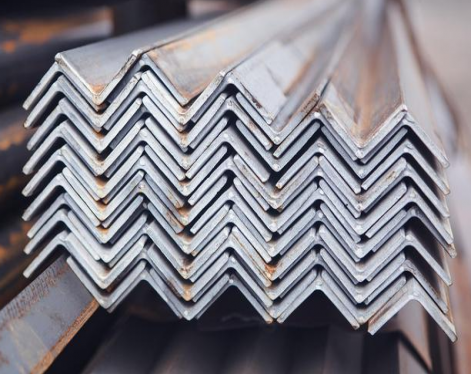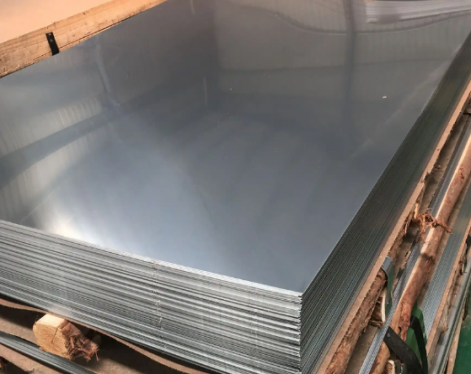What is angle steel?
Angle steel, commonly known as angle iron, is a long strip of steel with two sides perpendicular to each other. Angle steel is a steel material with an L-shaped cross-section, usually made of low carbon steel. There are equilateral angle steel and unequal angle steel. The two sides of the equilateral angle are equal in width. Its specifications are expressed in millimeters of "side width X side width X side thickness". For example, "∠30X30X3" means an equilateral angle steel with a side width of 30 mm and a side thickness of 3 mm.

Angle steel size expression method:
The dimensions of angle steel are usually represented by the following methods:
1. Angle steel model indication: The angle steel model usually consists of three numbers indicating width, height and thickness. For example, "L50×50×5" means that the width of the angle steel is 50 mm, the height is 50 mm, and the thickness is 5 mm.
2. Another way to express angle steel: The size of angle steel can also be expressed by two numbers indicating width and thickness. For example, the specification of an angle steel is 40×4, which means that the width of the angle steel is 40 mm and the thickness is 4 mm.
3. The weight of angle steel is also a way to express size. For example, the weight of an angle steel is 10 kg/meter, which means that the angle steel weighs 10 kg per meter of length.
There are many specifications of angle steel. The following are some of the more commonly used specifications:
1. L50×3, L50×5, L50×6
2. L63×4, L63×5, L63×6
3. L75×5, L75×6, L75×7
4. L100×6, L100×8, L100×10
Tips for purchasing angle steel:
1. Check whether the appearance of the angle steel is complete and there are no defects such as cracks and wounds.
2. When selecting the size of angle steel, factors such as the material’s strength requirements, stress conditions, and usage environment need to be considered.
3. The thickness and specifications of the angle steel must meet the requirements of the required project.
3. Pay attention to after-sales service when purchasing and choose a guaranteed brand and merchant.
Tips for using angle steel:
1. When using angle steel, pay attention to its strength and toughness to prevent excessive bending or impact.
2. Common methods for angle steel application include cutting, welding, threaded insertion, etc. Appropriate methods should be selected for processing.
3. When using angle steel for splicing, pay attention to the direction and position of the angle steel to avoid safety hazards caused by unstable installation.
Application areas of angle steel:
1. In the construction field, angle steel is commonly used in building steel structures such as doors, windows, bridges, and profiled panels.
2. In the fields of machinery manufacturing and shipbuilding, angle steel is often used to manufacture machine tools, machines, storage shelves, cranes, ship frames, etc.
3. In the field of energy and power, angle steel is usually used to manufacture solar brackets, wind power towers, power towers, etc.
Read more: ASTM A36 Hot Rolled Structural Angle Steel
Angle steel, commonly known as angle iron, is a long strip of steel with two sides perpendicular to each other. Angle steel is a steel material with an L-shaped cross-section, usually made of low carbon steel. There are equilateral angle steel and unequal angle steel. The two sides of the equilateral angle are equal in width. Its specifications are expressed in millimeters of "side width X side width X side thickness". For example, "∠30X30X3" means an equilateral angle steel with a side width of 30 mm and a side thickness of 3 mm.

Angle steel size expression method:
The dimensions of angle steel are usually represented by the following methods:
1. Angle steel model indication: The angle steel model usually consists of three numbers indicating width, height and thickness. For example, "L50×50×5" means that the width of the angle steel is 50 mm, the height is 50 mm, and the thickness is 5 mm.
2. Another way to express angle steel: The size of angle steel can also be expressed by two numbers indicating width and thickness. For example, the specification of an angle steel is 40×4, which means that the width of the angle steel is 40 mm and the thickness is 4 mm.
3. The weight of angle steel is also a way to express size. For example, the weight of an angle steel is 10 kg/meter, which means that the angle steel weighs 10 kg per meter of length.
There are many specifications of angle steel. The following are some of the more commonly used specifications:
1. L50×3, L50×5, L50×6
2. L63×4, L63×5, L63×6
3. L75×5, L75×6, L75×7
4. L100×6, L100×8, L100×10
Tips for purchasing angle steel:
1. Check whether the appearance of the angle steel is complete and there are no defects such as cracks and wounds.
2. When selecting the size of angle steel, factors such as the material’s strength requirements, stress conditions, and usage environment need to be considered.
3. The thickness and specifications of the angle steel must meet the requirements of the required project.
3. Pay attention to after-sales service when purchasing and choose a guaranteed brand and merchant.
Tips for using angle steel:
1. When using angle steel, pay attention to its strength and toughness to prevent excessive bending or impact.
2. Common methods for angle steel application include cutting, welding, threaded insertion, etc. Appropriate methods should be selected for processing.
3. When using angle steel for splicing, pay attention to the direction and position of the angle steel to avoid safety hazards caused by unstable installation.
Application areas of angle steel:
1. In the construction field, angle steel is commonly used in building steel structures such as doors, windows, bridges, and profiled panels.
2. In the fields of machinery manufacturing and shipbuilding, angle steel is often used to manufacture machine tools, machines, storage shelves, cranes, ship frames, etc.
3. In the field of energy and power, angle steel is usually used to manufacture solar brackets, wind power towers, power towers, etc.
Read more: ASTM A36 Hot Rolled Structural Angle Steel









